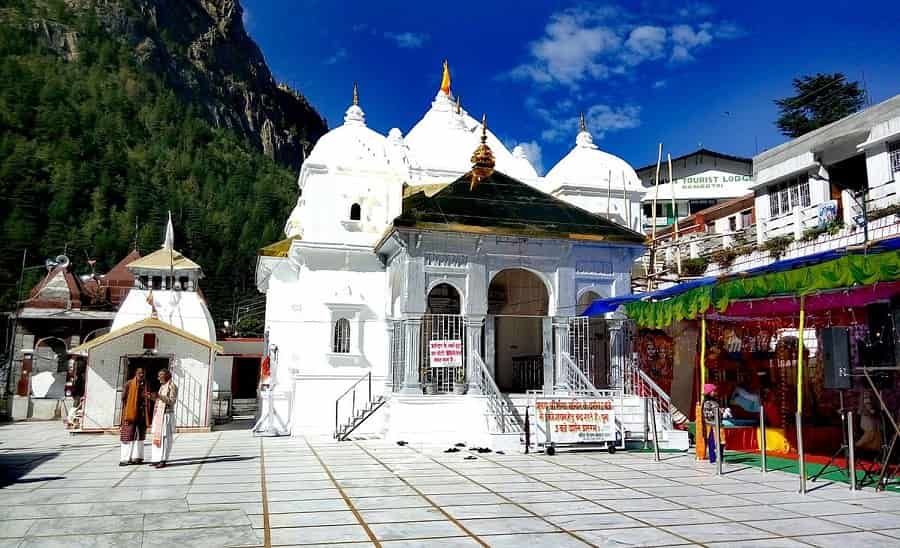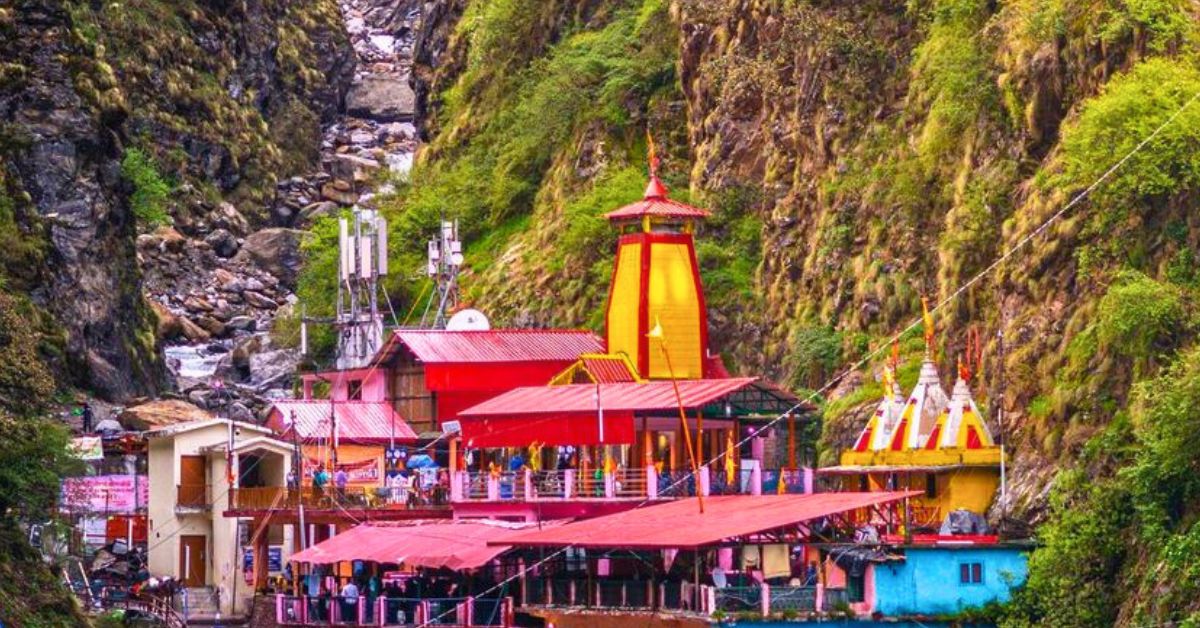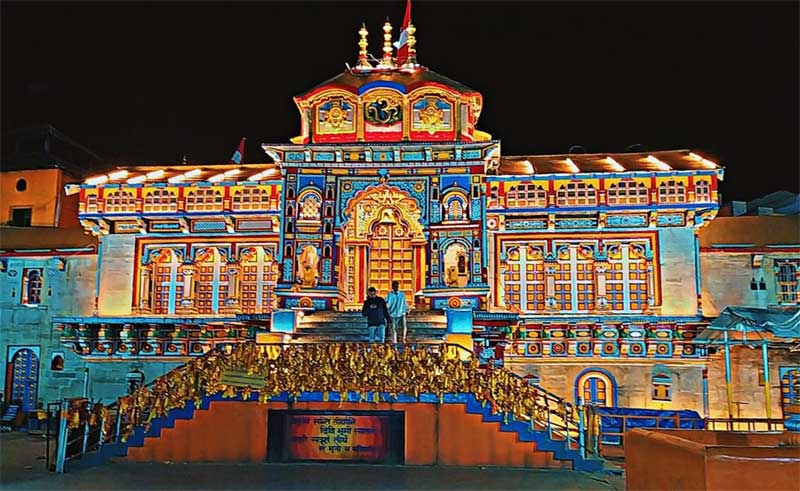Some journeys are chosen. Others name you. Kedarnath (केदारनाथ) is the second one type. Long before you notice the temple, the name itself travels with you in stories whispered by way of elders, in chants like “हर हर महादेव” (Har Har Mahadev), inside the pull of the Himalaya that refuses to let go as soon as it grabs your heart.
The Story People Still Tell
The Mahabharata isn’t just a book here. It lives in the air. Villagers will tell you how the Pandavas came seeking forgiveness after Kurukshetra. Lord Shiva, unwilling to appear, turned into a bull and tried to vanish into the ground. Bhima caught him, but only the hump remained. That form became the lingam at Kedarnath.
Later, Adi Shankaracharya walked these very slopes. He restored the shrine, gave it rituals, and fixed it as part of the Char Dham. What you spot nowadays is not only a temple of stone. Its memory is solid.
The First Sight
The stroll from Gaurikund is 16 kilometers. On paper, it’s simply distance, but every step stretches while you’re breathing in thin air. The Mandakini river (मंदाकिनी) continues to flow, wild, white, and speedy. Mules climb with their bells jingling, their hooves putting sparks off rock. Yatris go for chai in small tin-roof shops, and even that one sip of warm tea appears like strength returning.
Then, without warning, the temple appears. A squat, gray structure against a wall of white peaks. Not decorated, not towering just standing. Its strength lies not in height but in stubbornness. Behind it, Kedarnath peak looks down like a giant keeping watch.
Most people cry at that moment. Nobody plans to. It just happens.
Inside the Temple
Nandi (नंदी) greets you first, carved in stone, facing his master. Pilgrims touch him, bow their heads, and only then step into the sanctum. The walls carry simple carvings Pandavas, Parvati, and Krishna. But the heart is the lingam, rough and unshaped, the hump of Shiva himself.
It’s dark inside. The priest’s chants echo, the bell rings, and people press their foreheads to the floor. Some whisper, some stay silent. Time behaves differently here minutes stretch, hours shrink. You forget whether you’ve been inside for five minutes or fifty.
A Temple That Stands
Nature has tested Kedarnath again and again. Earthquakes shook these mountains, floods destroyed valleys, but the temple has survived. Its stones, cut and fitted without mortar, lock together with a precision even modern engineers admire.
The flood of 2013 destroyed nearly everything around. But a massive boulder rolled down, stopped behind the temple, and shielded it from the rushing waters. Locals say Shiva placed that rock himself. Scientists call it chance. Either way, the story has become part of the temple’s breath.
Panch Kedar and the Map of Faith
Kedarnath is the first among the Panch Kedar (पंच केदार). Each temple tells a piece of the story of Shiva’s bull form. Kedarnath holds the hump, Tungnath the arms, Rudranath the face, Madhyamaheshwar the navel, and Kalpeshwar the hair. Visiting all five is more than a pilgrimage it’s walking through a map that Shiva himself left behind.
The Yatra on Foot
The yatra (यात्रा) is not only physical. It’s emotional, even spiritual. Gaurikund, the starting point, offers a hot spring where pilgrims bathe before climbing. Then begins the real test.
The trail is lined with shrines where bells hang in hundreds, tied by travelers asking for safe passage. Children run alongside selling rudraksha malas. Women sing bhajans softly, matching their steps to the rhythm. At times, the silence takes over. Only your breathing and the thud of your stick on stone remain.
The higher you go, the less you think about reaching. The walk itself becomes prayer.
Festivals and Rituals
The temple opens in the summer season, normally on Akshaya Tritiya (अक्षय तृतीया). The idol, kept at Ukhimath in the course of wintry weather, is carried up in procession. For six months, the temple hums with existence pilgrims, clergymen, chants, and rituals.
By Kartik Purnima, the idol returns to Ukhimath. Snow buries the paths, silence takes over, and Kedarnath sleeps. Yet worship doesn’t prevent—the god is a gift wherever the idol rests.
During Maha Shivratri (महाशिवरात्रि), energy across the temple feels distinctive. Fasting, lamps, and chants all integrate to make the nighttime alive. Pilgrims believe Shiva walks among them then.
Notes for Pilgrims and Travelers
Traveling to Kedarnath is not casual. At three,500 meters, the air is thin and the climb punishing. Warm clothing, mild food, and strong footwear are necessities. Weather shifts speedily easy skies can turn into hail within minutes.
Guesthouses, dharamshalas, and easy resorts exist close to the temple. Comfort is basic, but after that climb, even a skinny blanket looks luxurious. Helicopter rides are available, though most say the true blessing comes only if you walk the trail yourself. And there is truth in that. The hardship is part of the darshan (दर्शन).
What You Carry Back
Everyone leaves Kedarnath with something. Some remember the chants echoing through the valley. Others carry the image of the temple framed by snowy peaks. For many, it's far the silence that lingers the kind that doesn’t frighten, however steadying.
Even after months, you’ll find yourself hearing “जय शिव शंकर” (Jai Shiv Shankar) in the back of your mind. You’ll see Nandi ready faithfully, the temple stones sparkling faintly within the morning solar, the mountain standing behind like a historical witness.
Kedarnath isn’t about spectacle. It isn’t about wealth or size. It’s about presence. About showing up tired, breathless, perhaps even broken and finding that Shiva was already there, waiting.




